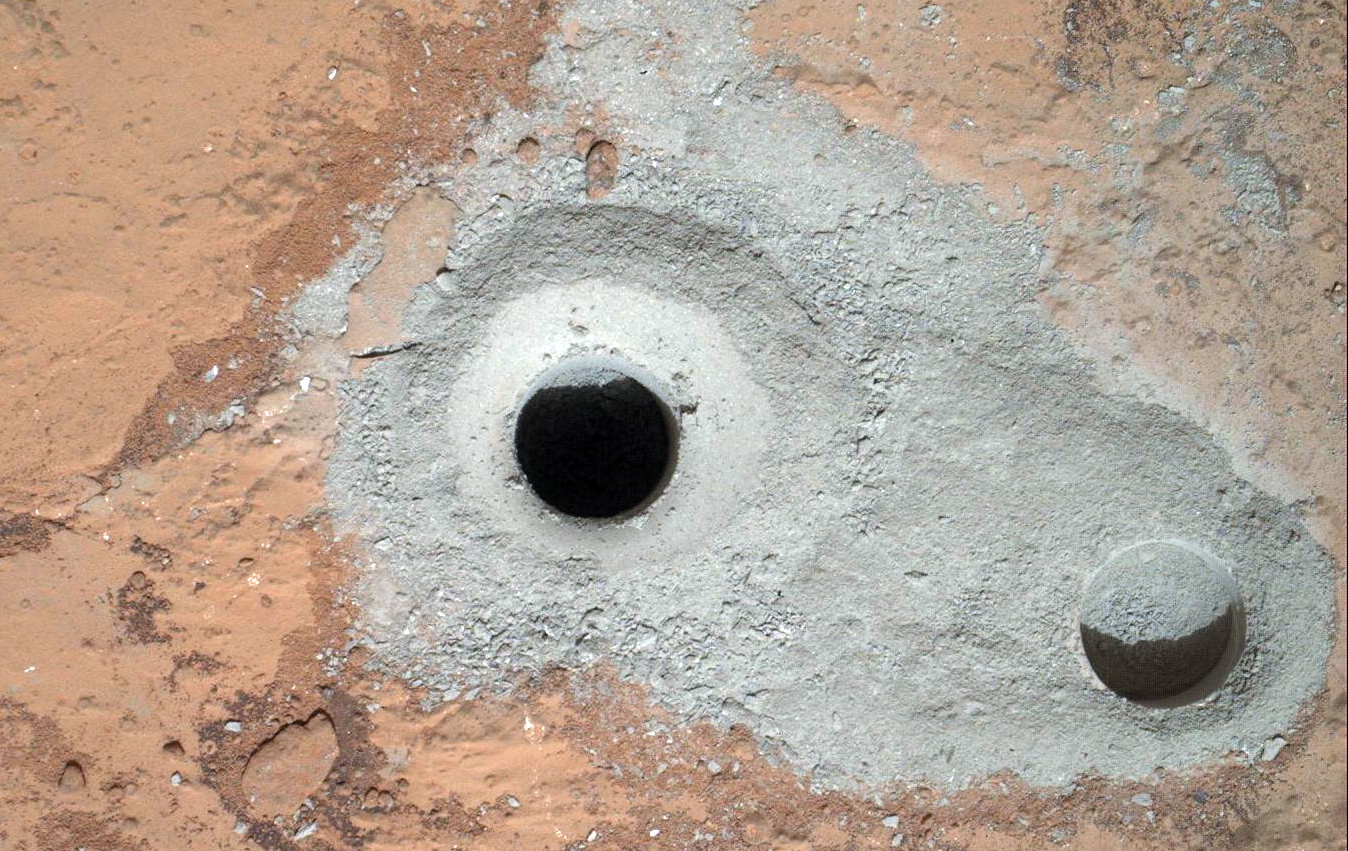LOS ANGELES — For the first time, a robot has drilled into a rock on Mars and collected a sample, and scientists are patting themselves on the back. The likelihood of high-fives also is extremely high.
The Curiosity rover has extended its robotic arm and used the drill carried there to bore a hole 0.63 inches wide and 2.5 inches deep into John Klein, as the Martian rock was dubbed. Within that hole, scientists believe, is evidence of the wet environments that existed on Mars eons ago.
But the successful use of the drill alone has scientists in a tizzy. This means that Curiosity is “a fully operating analytical laboratory on Mars,” said John Grunsfeld, with NASA’s Science Mission Directorate, in a news release.
“This is the biggest milestone accomplishment for the Curiosity team since the sky-crane landing last August,” he said.
Twitter geeks were applauding: “Holey Mars exploration Batman!” tweeted Sustainable2.
Mission project manager Richard Cook said in January that the drilling was the most significant engineering that the team has done since landing.
As the Los Angeles Times’ Amina Khan reported, Cook said the terrain was a big unknown and, thus, a big challenge. The area Curiosity rolled into is known as Yellowknife Bay, a place very different from the landing site at Gale Crater.
“It’s like we entered a whole different world,” said mission lead scientist John Grotzinger.
Developing the tools to tackle “unpredictable rocks” in unknown terrain required a lot of painstaking work beforehand, said Louise Jandura in Saturday’s news release.
Jandura, of the Jet Propulsion Laboratory in La Canada-Flintridge, Calif., said, “To get to the point of making this hole in a rock on Mars, we made eight drills and bored more than 1,200 holes in 20 types of rock on Earth.”
Now, for the analysis. On the ground, controllers will orchestrate the steps to process the sample. The powder created during the drilling travels up flues on the drill bit. Inside the sample-handling device, the powder is vibrated across a sieve that screens out the all but particles six-thousandths of an inch or smaller.
Then the detailed analysis starts.



